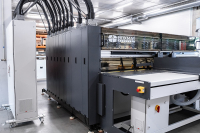Scalable cost control through it equipment leasing and hardware as a service
Staying competitive in today’s fast-paced digital environment requires more than just having up-to-date technology—it demands a smarter way of acquiring and managing it. This is why many businesses are turning to hardware as a service and it equipment leasing models. These approaches eliminate the need for large capital investments and replace them with flexible, subscription-based solutions that align technology spending with actual usage and operational demand. Instead of buying devices outright, companies now lease IT hardware—laptops, desktops, monitors, and more—through structured agreements that include full lifecycle support. This shift helps organizations maintain liquidity, reduce financial risk, and keep hardware current without disrupting workflows. With each device covered under a predictable monthly fee, finance and IT teams gain better visibility and control over budgets while avoiding the unpredictability of ad hoc purchases and emergency replacements. The ability to scale hardware fleets up or down quickly is another advantage of it equipment leasing. During periods of expansion, new devices can be provisioned rapidly. When needs change, the fleet can be adjusted without unnecessary overhead or surplus stock. This elasticity is especially valuable in industries that experience fluctuating staffing, remote workforce expansion, or project-based growth.
Choosing hardware as a service also offloads key administrative burdens from internal IT teams. Device delivery, configuration, monitoring, maintenance, and end-of-life recycling are all managed by a service provider. This frees up technical staff to focus on strategic initiatives rather than device logistics and troubleshooting. It also means businesses benefit from built-in upgrades and refresh cycles—ensuring employees always work on secure, reliable equipment without additional procurement delays. The sustainability angle cannot be overstated. Hardware leasing aligns closely with circular economy principles, as devices are refurbished and reintroduced into service rather than discarded. This not only reduces e-waste but also strengthens environmental accountability across the IT supply chain. Companies that choose leasing models are often able to meet ESG and compliance targets more effectively while demonstrating a commitment to responsible tech management. When implemented with a trusted provider like devicenow, hardware as a service becomes more than an operational tool—it becomes a strategic advantage. With global support infrastructure, centralized lifecycle management, and transparent cost structures, businesses can modernize IT across every department, location, and use case. It’s a model built for growth, stability, and long-term efficiency.
End-to-end lifecycle optimization with device as a service hp
Operational agility, end-user satisfaction, and IT efficiency are three pillars of successful technology strategy. A comprehensive approach such as device as a service hp addresses all three by combining reliable hardware, expert support, and predictable pricing into one scalable offering. This solution simplifies how devices are delivered, supported, and replaced, creating a frictionless experience for both users and IT administrators. HP devices are built for business—durable, secure, and optimized for performance across industries and work environments. Through the DaaS model, these devices are not only delivered pre-configured and ready for use but also supported throughout their lifecycle by proactive service and analytics. Performance is monitored in real time, and any issues are resolved quickly, minimizing downtime and ensuring business continuity. Integrating device as a service hp into your IT ecosystem provides immediate benefits. Equipment is replaced on a fixed schedule or when issues arise, ensuring users aren’t held back by outdated or malfunctioning hardware. Rapid next-business-day replacements are standard, helping companies avoid productivity loss and maintain momentum even in the face of hardware disruption. Beyond basic support, HP DaaS offers deeper visibility into fleet performance. Usage data, maintenance schedules, and health metrics help IT leaders make informed decisions about when to scale, replace, or upgrade. This data-driven approach leads to smarter resource planning, fewer reactive fixes, and stronger alignment between IT capabilities and business needs.
Security is also built into the foundation. HP’s enterprise solutions are equipped with robust hardware-level security, protecting data across endpoints and reducing the risk of breaches. When paired with DaaS lifecycle services, this creates a secure, compliant environment for both in-office and remote teams—especially important in industries where data integrity and privacy are non-negotiable. What makes the DaaS model particularly valuable is its ability to reduce the total cost of ownership without compromising quality or service. With fixed monthly billing, companies avoid the spike in expenses that typically accompanies hardware refreshes. Instead, costs are distributed evenly and can be scaled to match headcount, projects, or global expansion plans. IT managers gain the freedom to innovate without waiting on lengthy procurement cycles or budget approvals. Choosing a partner like devicenow ensures that all the benefits of device as a service hp are delivered at enterprise scale. With services operating in more than 190 countries, global rollouts, device recovery, and localized support are fully synchronized. This consistency is vital for multinational organizations aiming to streamline their device strategy across diverse regions. Ultimately, DaaS isn’t just about devices—it’s about delivering a seamless, secure, and scalable digital workplace. HP’s technology, combined with expert lifecycle management, creates a foundation for long-term IT success in any business environment.









